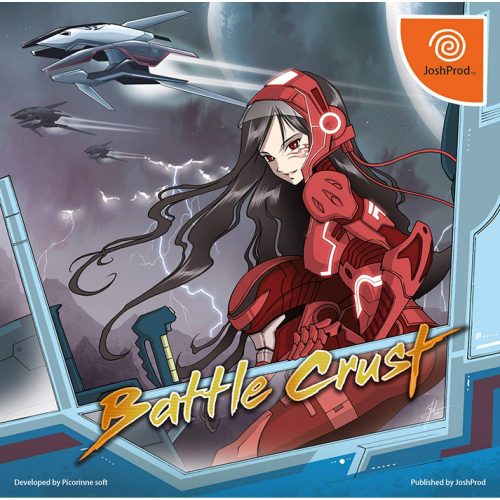
Just last year, the following independent games were released: Bang Bang Busters, Battle Crust, Finding Teddy, and The Escapee. Try to guess what console they were released on? The Sega Dreamcast, Sega’s final console! Though it was Sega’s last console, it has never been forgotten thanks to its long dedicated cult fan base. Despite its successful 9/9/99 North American launch, the momentum was killed by the overwhelming hype of the PlayStation 2. Even so, many gamers and those in the industry tend to agree that the Dreamcast still had the best games in history, and a large percentage of them still hold up to this day.
Though the console had its final official licensed releases in North America in 2001 and in Japan in 2007, did you know that between then and now, there still continue to be new Dreamcast games and there are still some presently in development, and that there are still Kickstarters for some new ones? If you thought Tupac releasing new albums since his (alleged) slaying back in 1996 was one thing, the Dreamcast continuing to get new games is a unique journey of its own. So, how did Dreamcast become the Tupac Shakur of video games?
It Can Play CD-ROMs
Everyone knows that DVDs and Blu-rays are all the rage, and during the prime of the Dreamcast, DVDs were still new and expensive, so Sega compromised with a GD-ROM format, 1GB discs in attempt to make the console as cheap as possible. In addition to the GD-ROM, Sega also made another format called MIL-CD, or the Music Interactive Live-CD, which was meant to provide record labels to release CDs with content that could be compatible with the Dreamcast, which would then play videos and have access to internet content (the internet was also in its infancy upon the debut of the Dreamcast). However, the additional support for the MIL-CD made the console easy to hack.
Thanks to the MIL-CD support, hackers found ways to make games bootable on standard CD-ROMs and though the GD-ROM was meant to combat piracy, that turned out to not be the case since Dreamcast games could then be copied onto CD-ROMs. Though this was argued to lead to the Dreamcast’s downfall, at the same time, this is what allowed the console to stay alive thanks to the independent scene. Since the GD-ROM is still officially the property of Sega, independent and homebrew developers can just provide the games on CD-ROM format, which also makes things much cheaper and easier in more ways than one.
Doesn’t Require Licensing and Other Bureaucracy
Shortly after the Dreamcast was discontinued in some respective regions, some independent companies did try to get the proper licenses for the sake of quality assurance. RedSpotGames, a German based developer, did try to get official approval from Sega’s European branch back in 2003 and they weren’t interested, and when they tried to get it from Sega of Japan, their policy was they couldn’t license to non-Japanese companies. What licensing does help with is quality control so you don’t have an over saturation of games that led to the 1983 North American Crash.
Considering that the Dreamcast is no longer in production and the quality control team for the console no longer exists, it’s not the ultimate reason why companies don’t require licensing. One reason why independent and homebrew developers can make Dreamcast games without official licensing is thanks to development kits that aren’t officially provided by Sega. One notable development kit is KallistiOS, an open source software that by passes all the legalities involved.
Though games such as Sturmwind and GunLord by NG:DEV.TEAM could get releases on modern consoles such as the PS4 and Xbox One and mobile devices, finding interested publishers and getting the approval of the console manufacture can be a bureaucratic nightmare. By releasing it on the Dreamcast, they can just bypass all of that and release it at a reasonable price.
Final Thoughts

So, if you’re thinking of independently developing games and need a platform for it, maybe the Dreamcast is your best shot. It has a strong fan base to this very day and it’s cheaper and easier to develop for. Dreamcast is still remembered as a console that pushed the envelope despite being a heavy underdog. It was the console that first gave us Jet Set Radio, Shenmue, Seaman, and other innovative games. It was the console for the arcade gamer when the arcade was dying outside of Japan. It was the console that gave us the first Soul Calibur, which became the second game ever to earn a perfect 40 in Famitsu magazine (the first being The Legend of Zelda: Ocarina of Time for the N64), and in those days, getting a 40 in Famitsu was a much bigger deal than it was now. It was also the console that first gave us one of the best 2D fighting games of all time, Marvel Vs. Capcom 2.
It’s a console remembered for dying in the middle of its prime, just like Tupac. Considering its unique status and cult following, it’s no wonder why it still gets games to this day. Sega discontinued the Dreamcast when it still had so much to offer, but thanks to dedicated fans who are developers, they still find that Dreamcast still has a place in modern gaming.
Recommended Post


